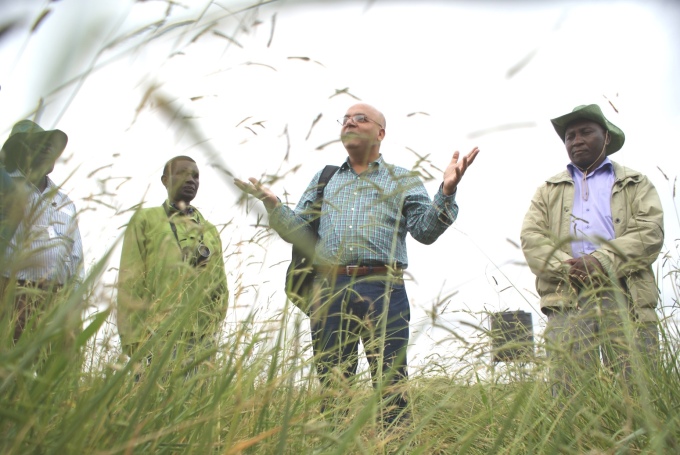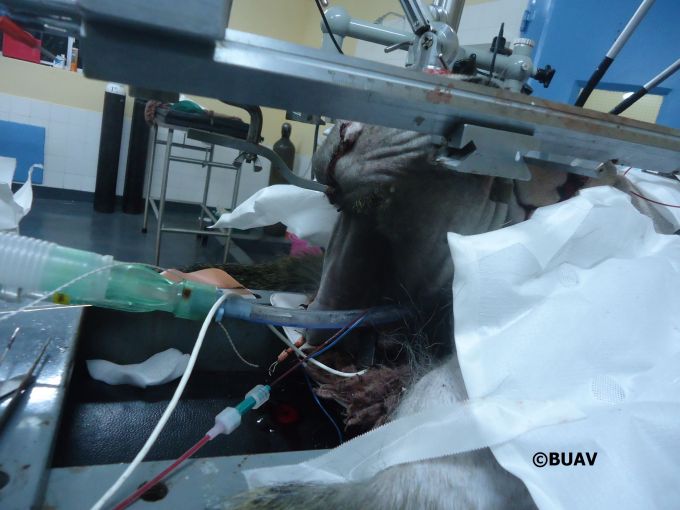
By Geoffrey Kamadi
Not only was it an uplifting piece of good news, but a source of pride and joy to welcome a new member of an endangered, rare species of antelope on July 7, at the Mount Kenya Wildlife Conservancy.
More importantly perhaps, the arrival of the new-born mountain bongo– appropriately christened Sabasaba (Swahili for Seven, seven, denoting the day and month of her birth) – is a clear indication that efforts to save the antelope are clearly bearing fruit. It also signals hope, in terms of restoring the population of the endangered species back into the wild and away from the brink of extinction.
However, whereas it is all very well to save the antelope for the sake of saving the species, it is important to keep in mind that its survival cannot be decoupled from the need to restore, protect and conserve its natural habitat.
It is worth noting too that the home of this animal happens to be in Kenya’s water towers (forested mountain environments). This includes the Mau Forest Complex, Mount Kenya forest, The Aberdare Ranges, Cherangani Hills, Mount Elgon, Londiani and Nandi Hills.
Water Towers Critical to Livelihoods
And we all know what critical socio-economic role these water towers play. Whether it is in power generation, tourism or agriculture the livelihoods of the vast majority of Kenyans depend directly and indirectly on the wellbeing of these mountain forest environments.
In other words, conserving the mountain bongo antelope is not only beneficial to this particular animal per se, but that protecting the species has direct and indirect implications on human as well.
This can, and usually does lead to grave, even tragic consequences, such as clashes between farming and livestock-keeping communities, who fight over the dwindling water resources. Also, the erosion of the fertile topsoil is made worse as is the risk of avalanches, saying nothing of climate change effects that are exacerbated as a consequence. And the list goes on and on, ad nauseam.

Environment Under Threat
Perhaps nowhere in Kenya are the serious ramifications of environmental interference upstream unfolding in such an obvious yet consequential, tragic manner than in the Tana River Delta. The Delta, which sits on nearly a quarter of Kenya’s total land mass (21.7 per cent), very much depends on water emanating from these water towers.
Tana River catchment relies on Mount Kenya (49 per cent) and The Aberdare Ranges (44 per cent) for its water. However, damming of the river and destruction of the river’s catchment environment upstream has reduced the water volume and the amount of silt deposited in the Delta.
What this means is that the Delta has lost 20 per cent of its total area and that the region’s soil fertility has greatly reduced, thereby affecting crop yield. What’s more, the low water volumes in the river channel cannot withstand the force of the sea water from the Indian Ocean like before, during the high tide.
In other words, the sea water is pushing further and further to distances as far as 30km inland through the river channel. This water therefore cannot support farming, fresh water fish nor can it be depended upon by pastoral communities for their livestock. One can only imagine what this means for the livelihoods of thousands in the Delta.
It goes without saying that the water tower environments need protecting. And one way of doing so, is by protecting the mountain bongo antelope.
The Mountain Bongo Antelope

This is what Najib Balala, the Cabinet Secretary in the Ministry of Tourism and Wildlife, set out to do by unveiling the National Recovery and Action Plan for the Mountain Bongo (2019-2023) on July 8. The Plan will help focus on security, human activities, disease prevention, species interaction, enhancing breeding programmes as well as policy harmonization.
Fewer than 100 individuals exist in the wild the world over, out of which Kenya is host to 77. The species has been classified by the International Union for Conservation of Nature Antelope Specialist Group (IUCN 2003) as a critically endangered species.
It is listed on Appendix III of the Convention on International Trade of Endangered Species of Flora and Fauna (CITES), which allows limited trade on the species.
It is also listed under the Sixth Schedule of the Wildlife Conservation and Management Act (WCMA), 2013 as an endangered species. The Act prescribes special focus on this species through the development of a recovery plan.
A number of organizations have been instrumental in the setting up of the species’ recovery in the Mount Kenya Game Ranch (MKGR). This includes the Rare Species Conservatory Foundation (RSCF), the American Association of Zoos and Aquariums (AZA) and the White Oak Conservation Center in Florida.
A sanctuary to re-introduce the animals back into the will be put up in the Mount Kenya region early next year.


